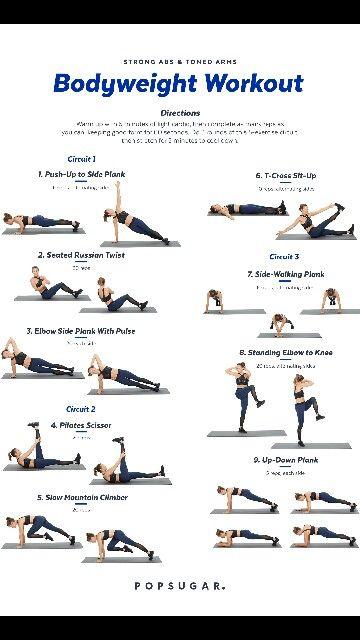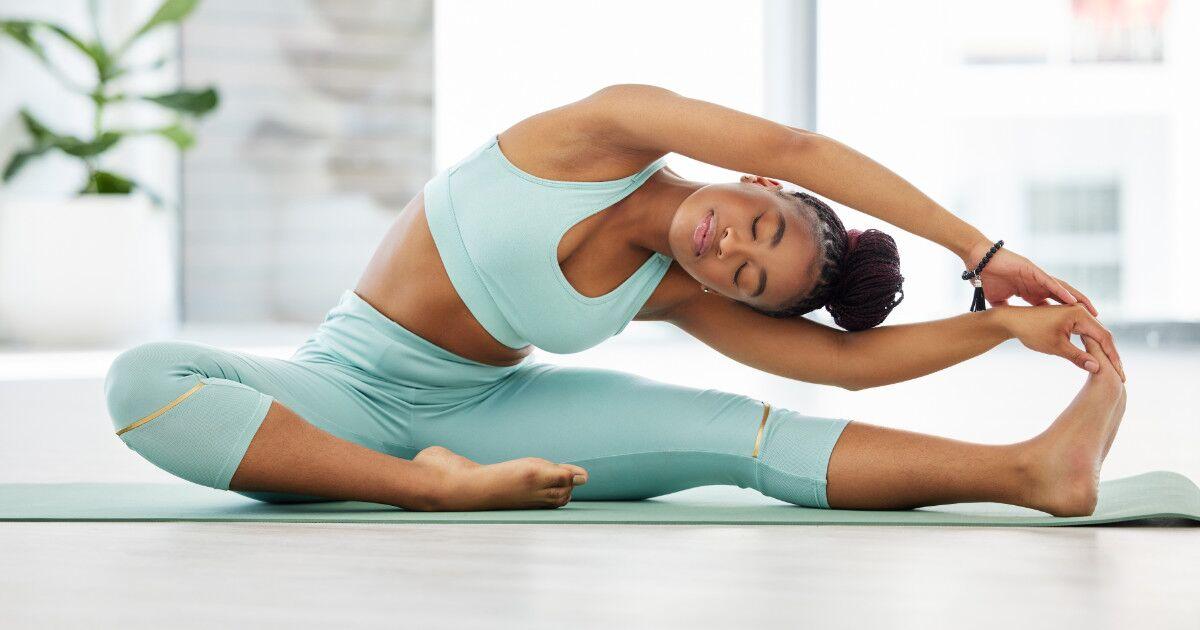In a fast-paced world where fitness often feels tethered to the gym, the allure of Pilates workouts that require no equipment is more appealing than ever. Imagine transforming any space—your living room, a park, or even a hotel room—into your personal Pilates studio, where the only tools you need are your body and determination. This article explores the versatility and accessibility of Pilates, offering a variety of routines that promote strength, adaptability, and mindfulness without any special gear. Whether you’re a seasoned practitioner or a curious beginner, these adaptable workouts will empower you to embrace movement wherever life takes you.Join us as we dive into the world of equipment-free Pilates and discover how you can cultivate a healthier, stronger you—no matter the setting.
Table of Contents
- Exploring the Essentials of Bodyweight Pilates Techniques
- Tailoring Your Space for Effective Pilates Practice
- building Core Strength with Simple Mat-Based moves
- Enhancing Flexibility and Balance Without Equipment
- Q&A
- Concluding Remarks
Exploring the Essentials of bodyweight Pilates Techniques
Bodyweight Pilates offers a unique opportunity to engage both your mind and body without the need for any equipment. Through a series of controlled movements, you can effectively strengthen your core, improve flexibility, and enhance your overall fitness level. Here are some essential techniques to incorporate into your routine:
- The Hundred: A classic Pilates exercise that stimulates circulation and warms up the body.
- Roll-Up: This movement helps you articulate your spine while targeting your abdominal muscles.
- Single Leg Circles: Great for hip mobility and core stabilization, enhancing overall balance.
- Plank Variations: Strengthens the entire body, focusing on core stability and upper body strength.
- leg Pulls: targets the glutes and hamstrings while emphasizing proper engagement of the core.
To facilitate your practice, you can create a simple schedule that includes various bodyweight exercises. Below is a sample weekly workout plan that emphasizes consistency and variety:
| Day | Exercise Focus |
|---|---|
| Monday | The Hundred & Roll-Up |
| tuesday | Plank Variations & Leg Pulls |
| Wednesday | Rest & Recovery |
| Thursday | Single Leg Circles & The Hundred |
| Friday | Roll-Up & Leg Pulls |
| Saturday | Plank Variations & Stretching |
| Sunday | Active Rest (light walk or yoga) |
Tailoring Your Space for Effective Pilates Practice
Creating an inviting and functional environment for your Pilates practice can substantially enhance your experience and results. To begin, consider the following factors to foster a peaceful and motivating workout space:
- Lighting: Opt for natural light if possible, or use soft, warm artificial lights to create a calming atmosphere.
- Flooring: A flat, non-slip surface, like a yoga mat or even a carpet, helps in maintaining balance and prevents injuries.
- clearing Clutter: Your surroundings should be tidy and free of distractions to help you focus on your movements and breathing.
- Comfort: Ensure the temperature is suitable and consider using cushions or props for added comfort during floor exercises.
Next, personalize your space to keep motivation high. Adding elements that inspire you can make a significant difference. Consider these ideas:
- Artwork: Hang images or quotes that resonate with your wellness goals or promote positivity.
- Sound: Integrate calming music or a speaker for guided workout sessions—this can significantly enhance the ambiance.
- Aromatherapy: use essential oils or scented candles for a sensory boost that helps you relax and focus.
- regular Updates: Change your setup occasionally to keep things fresh and inviting, which may include rearranging furniture or swapping decor items.
Building Core Strength with Simple Mat-Based Moves
To effectively build core strength using the mat,start with moves that engage multiple muscle groups while focusing on controlled movements.plank variations are exceptional for targeting the core while also engaging the shoulders and back. A simple forearm plank requires you to hold a straight position, keeping your body aligned from head to heels. Additionally, abdominal curls emphasize the rectus abdominis, providing a strong foundation for more challenging poses. You can elevate this exercise by bringing your knees to your chest,which increases the intensity and engages the lower abs.
incorporating leg lifts and bridges into your routine can effectively enhance core stability. While lying flat, raise your legs without letting them touch the ground, which forces your core to work overtime to stabilize your body. Bridges, on the other hand, focus on the glutes and lower back, making them a complementary move to core strengthening.For a quick reference, consider the table below to visualize how these exercises fit into your routine:
| Exercise | Muscle Groups Targeted | Duration |
|---|---|---|
| Forearm Plank | Core, Shoulders, Back | 30-60 seconds |
| Abdominal Curls | Upper Abs | 15 reps |
| Leg Lifts | Lower Abs | 10-15 reps |
| Bridges | Glutes, Core, Lower Back | 15 reps |
Enhancing Flexibility and Balance Without Equipment
Improving flexibility and balance is accessible to everyone, regardless of available equipment. Simple Pilates exercises taken directly from the mat can serve as powerful tools to enhance these crucial aspects of physical fitness. Incorporating movements like the side leg series and the seated forward fold can significantly boost your body’s range of motion while helping to stabilize your core. These routines encourage the elongation of muscles and elongation of the spine, making them ideal for anyone looking to achieve a more aligned posture.
Here are a few exercises to add to your daily routine:
- The Plank: Engages your core while improving shoulder and back strength.
- The Saw: Enhances spinal flexibility and stretches your hamstrings.
- The Bridge: Strengthens glutes and lower back while creating stability.
- The Cat-Cow Stretch: Increases spinal flexibility and relieves tension.
For a quick reference on how these exercises can improve your balance and flexibility,consider the following table:
| Exercise | Benefits |
|---|---|
| The Plank | Strengthens core,enhances posture. |
| The Saw | Stretches spine, promotes agility. |
| The Bridge | Stabilizes lower back,engages glutes. |
| The Cat-Cow Stretch | Relieves back tension, encourages movement. |
Q&A
Q&A: Pilates Workouts You Can Do Anywhere – No Equipment Needed
Q1: What is Pilates, and why should I consider doing it?
A1: Pilates is a low-impact exercise method focusing on core strength, flexibility, and overall body awareness. It’s suitable for all fitness levels and emphasizes controlled movements, making it an excellent choice for improving posture, enhancing flexibility, and building a strong foundation for other physical activities.
Q2: Can I really do Pilates anywhere without equipment?
A2: Absolutely! One of the beauties of Pilates is its adaptability. You can perform exercises in a variety of environments—be it your living room, a park, or even in a hotel room during travel. All you need is a small amount of space and your own body weight to create an effective workout.
Q3: What are some beginner-amiable Pilates exercises I can try?
A3: Here are a few great starter moves you can do anywhere:
- The Hundred: Lying on your back, lift your legs and head off the floor while pumping your arms by your sides.
- Single leg Circles: Lying flat on your back, extend one leg and make small circles.
- Roll-Up: Lie flat, then slowly roll up to a sitting position, reaching for your toes. This works on your spine’s flexibility and core strength.
- Plank: A fundamental exercise that targets multiple muscle groups—hold a straight line from head to heels.
Q4: How can I ensure my form is correct?
A4: Body awareness is a key component of pilates. Focus on engaging your core throughout each exercise. You can check your form by paying attention to alignment; keep your shoulders relaxed, and your spine extended. It might be helpful to record yourself or practice in front of a mirror to self-assess.
Q5: How often should I practice Pilates to see results?
A5: Consistency is key! Aim for at least three sessions a week for optimal results. Even if you can only spare 15-20 minutes a day, short, focused sessions can accumulate benefits over time—enhancing your strength, flexibility, and overall body awareness.
Q6: Are there any specific tips for staying motivated while doing Pilates workouts at home?
A6: Setting a specific time for your sessions can help make Pilates a routine. Find an online class or video that resonates with you, or join an online community for encouragement.Keeping the workout space inviting and clutter-free can also provide a positive environment that enhances focus and motivation.
Q7: Can Pilates be tailored for different fitness levels or concerns?
A7: Definitely! Pilates is highly customizable. Beginners can start with basic movements while advanced practitioners can incorporate variations and challenges. If you have specific concerns such as back pain or recovery from injury,modify the exercises to suit your needs or consult a professional for tailored guidance.
Q8: What are the overall benefits of Pilates without any equipment?
A8: Pilates without equipment offers numerous benefits, including improved strength, increased flexibility, enhanced body awareness, and better posture. It’s also an effective way to relieve stress and promote relaxation. Plus, the convenience of being able to do Pilates anywhere makes it a perfect choice for maintaining your fitness routine!
Q9: where can I find free resources or routines for my at-home Pilates sessions?
A9: The internet is flooded with fantastic resources! Websites like YouTube offer countless free Pilates classes, while fitness apps provide guided workouts.Look for Pilates-focused channels or instructors who resonate with your style to enhance your at-home practice. Social media platforms also feature communities where you can join challenges and share your progress.
Concluding Remarks
In a world where fitness frequently enough seems tethered to flashy equipment and costly memberships, Pilates emerges as a beacon of simplicity and accessibility. The beauty of these workouts lies not just in their effectiveness but in their adaptability — they can be seamlessly woven into the fabric of your daily life, no matter where you are. Whether you find yourself in a hotel room, a sunny park, or even your cozy living room, the power of Pilates is always within reach.
As you embark on your journey with these equipment-free workouts, remember that the essence of Pilates is rooted in mindfulness and control. Each movement invites you to connect with your body in a new way, fostering strength and flexibility that transcend customary exercise boundaries. So, the next time you need a quick workout that requires nothing more than your own body, remember that pilates is waiting for you, ready to transform any space into your personal studio.
Embrace the freedom of movement, and let your fitness journey flourish, one breath and one exercise at a time. The journey is yours to define, and with pilates, the possibilities are truly limitless.



